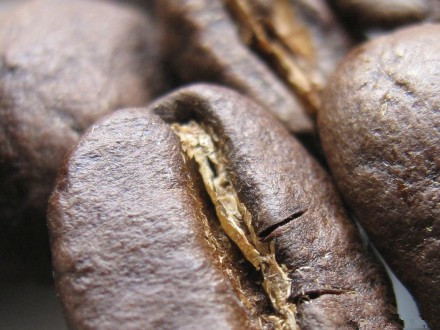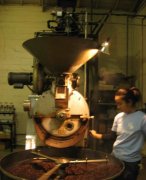Roasting technology of boutique coffee beans benefits of wood roasting coffee
All coffee roasting machines work on the same principle: heat raw coffee beans, produce physical and chemical changes and turn them into roasted beans. Physical change means that the color of raw coffee beans changes from green to brown, and the shape changes accordingly. Chemical changes are much more complex, which is the process of production, balance and transformation of substances with fragrance, acidity and other odor components. Make the roasted coffee beans reach the aroma, acidity and other different combinations of smell and taste desired by the roaster.

The main difference between wood baking and gas baking is the rate at which the internal temperature of coffee beans rises. For a long time in history, coffee was roasted by wood fire, and this method of roasting lasted for centuries. Later, many energy sources replaced wood as fuel for roasting coffee beans, such as natural gas. This is to speed up the baking speed and reduce costs, the choice of fuel does not affect the quality of coffee.
With the advent of many new baking energy sources, a wood roaster named Kim Loupis Coffee still insists on choosing traditional, historically tested wood baking methods. The roasting time of coffee wood is 3-4 times slower than that of natural gas roasting, but many of the natural ingredients of roasted coffee are retained in beans, which are low in acidity and mellow.
You might wonder, is it very similar to baking in an oven with wood as fuel and baking directly over a fire? The smoke produced by direct baking of wood will have a certain effect on the aroma of coffee beans. But the truth is, the change in aroma doesn't really change the composition of coffee, it just adds another flavor.
The wood roasting referred to in this paper is different from charcoal-roasted coffee, charcoal-roasted coffee is more regarded as Japanese charcoal-roasted coffee, which is a kind of deep-roasted coffee with darker color, while the coffee referred to in this paper is moderately roasted coffee, which is different from charcoal-roasted coffee in the degree of roasting. I do not want wood roasting to be conceptualized and narrowed, so it is especially different in the name of the article. But it can be seen that the slowly baked coffee beans have the characteristics of low acidity and mellow taste. (transferred from cafe Culture)
Important Notice :
前街咖啡 FrontStreet Coffee has moved to new addredd:
FrontStreet Coffee Address: 315,Donghua East Road,GuangZhou
Tel:020 38364473
- Prev

Summary of Coffee Bean Technology Coffee Baking training and Learning
For a long time, I wanted to better explore the secrets of coffee and dreamed of opening a self-baking boutique, so I signed up for the Brista coffee roasting class and studied systematically. After the study of theoretical knowledge, it is found that the world of coffee roasting is very big, and each boutique bean has a given baking degree, baking time, machine firepower, water loss weight and bean production time.
- Next

Roasting technology is the coffee flavor formed naturally or baked?
It tastes like pastry, sweet apricot pie. It smells like ripe currants. Or the taste of green peaches with cream. In the process of drinking coffee, you sometimes hear these exotic taste adjectives. Then we can't help but wonder which flavors are inherent in coffee and which are created during roasting. We meet more often in raw coffee beans.
Related
- What is the meaning of lactic acid fermentation with coffee bean treatment?
- How to judge the state of foam by sound?
- How does the latte pull out the unicorn pattern? Come to get for a little trick to improve the flower pull!
- Will flower pulling affect the taste of the latte?
- Do you know the history of coffee?
- The difference between honey treatment and sun washing what is raisin honey treatment?
- What kind of milk can a novice use to make coffee foam to keep the foam longer? The correct method and skills of milking tutorial sharing
- Why do washed coffee beans taste sour? Flavor characteristics of washed Coffee
- Introduction to the skill of how to practice the size and height of water injection around the circle of hand-brewed coffee
- How do beginners practice coffee flower drawing from scratch?

